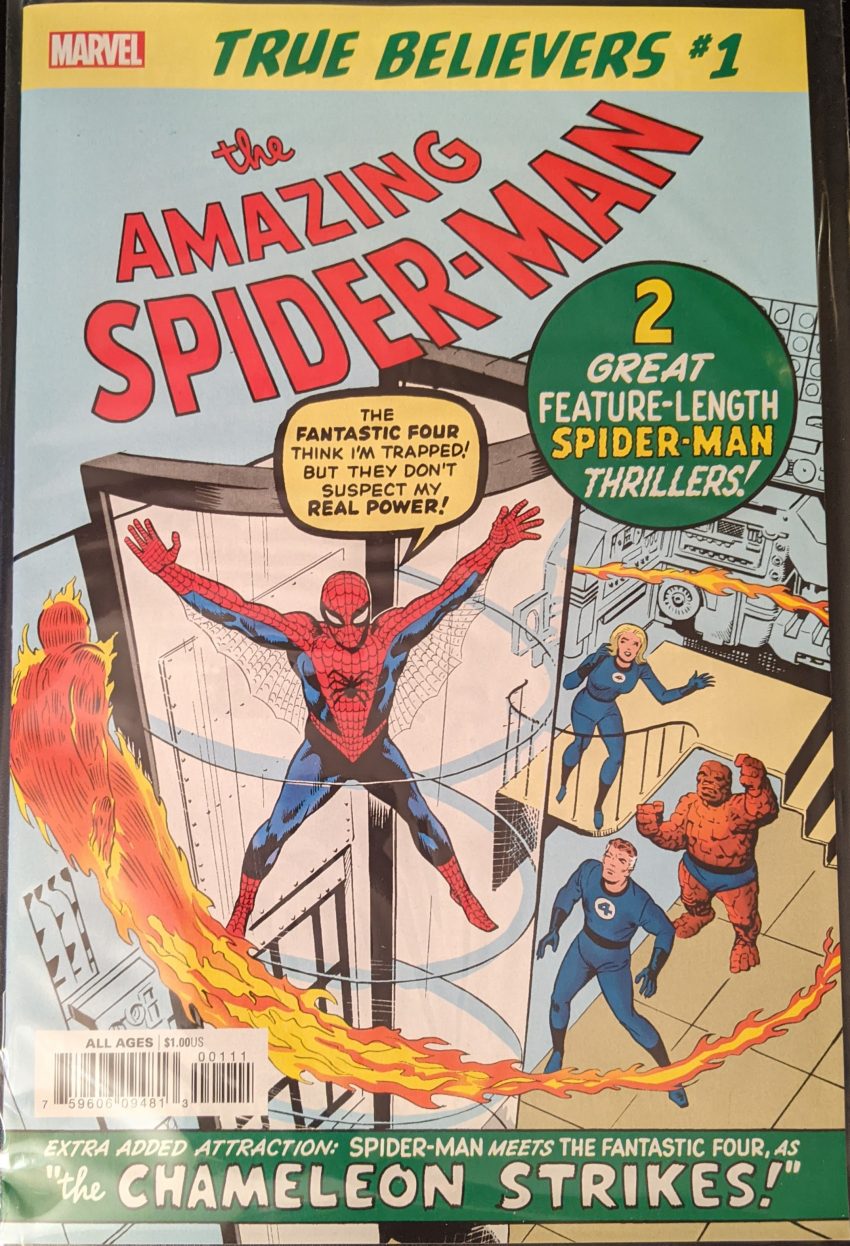Another facsimile edition for another wildly expensive comic. 2 great feature-length Spider-Man thrillers! They really threw around phrases like “feature length” and “book length” for awhile there. So! Amazing Fantasy 15 was cover dated September 1962. ASM 1 is March 1963. A bit of a gap between the 2. As the blurb at the end of AF 15 suggested, originally Spidey was just gonna continue to star in that book. This would not be uncommon. Thor debuted the same month in Journey Into Mystery #83, and would continue to star in that title until was renamed Thor. Iron Man first appeared in Tales of Suspense, Ant-Man in Tales to Astonish, all the old monster and scifi books got repurposed into superhero books as The Marvel Age began, many of them winding up starring 2 heroes at a time. This was because Marvel was in a very restrictive publishing deal with the very distributor who published National Periodicals, the company that would become DC. Marvel publisher Martin Goodman was known for flooding the market with crap to seize on any trend that popped up over the years, and when the bust of the 1950s brought him low, National’s parent company locked him into this restrictive deal to keep him under control. All of which is to say, for one thing, The Fantastic Four and Hulk debuting in their own, self-titled series was pretty crazy (Especially since Hulk was cancelled pretty quick), and the runaway success of Spider-Man is evident in him being elevated to his own title. One wonders if he’s starring in 2 feature-length thrillers because they were the intended Spider-Man features for AF 16 and 17 combined into a solo title. Seems likely. But what better way to announce his new title than a team-up with The Fantastic Four, who’s surprise hit series brought about the whole Marvel line? Perhaps because of them, this is a 2nd and final cover by Jack Kirby. We begin on a splash of various people angrily yelling at Spidey, including the first appearance of J. Jonah Jameson, with a note that Spidey first appeared in AF15 and got such a response that he’s gotten his own book. Then, on page 2, Peter Parker angrily takes off his costume, clearly just in from catching the burglar, and recaps his origin real quick. He goes downstairs, thinking that without Uncle Ben, they have no money to pay bills, even as May tells a bill collector she’ll have something next week.
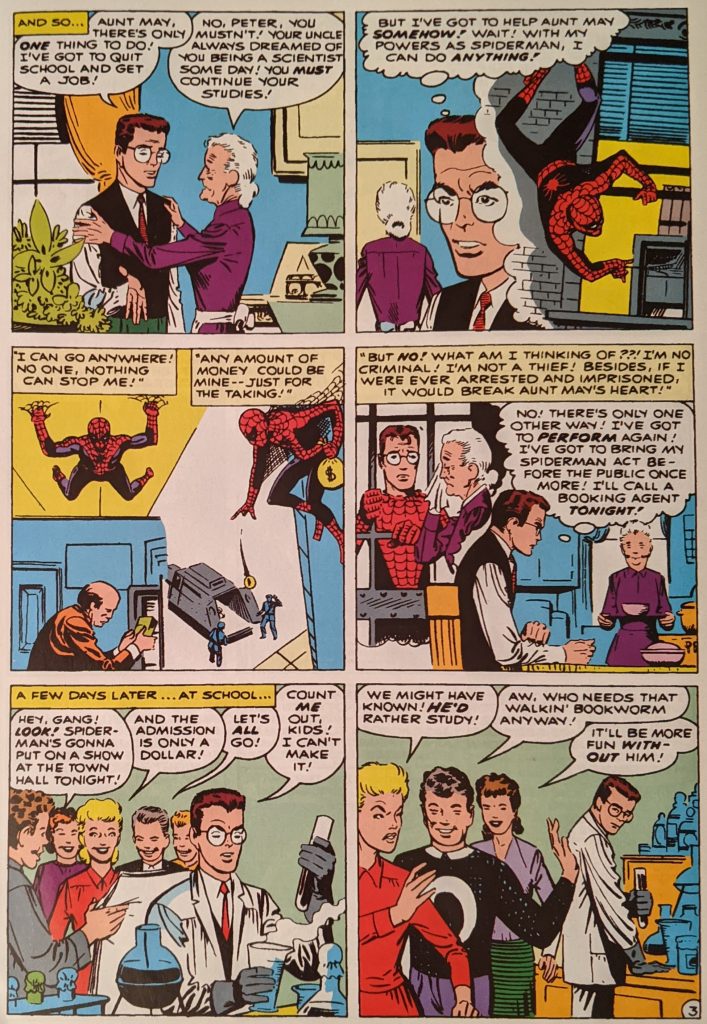
Probably Liz Allen leading the gang down there, not yet named. Spider-Man does his thing, but he runs into a problem: His employer can’t write a check to a man who won’t reveal his identity. He has it made out to “Spider-Man,” but then the guy at the check cashing place won’t take it, saying anyone could be in that costume. Meanwhile, an as-yet-unnamed JJJ writes his first anti-Spider-Man article, and the next day, when Spidey returns for his next show, he’s told there won’t be one.
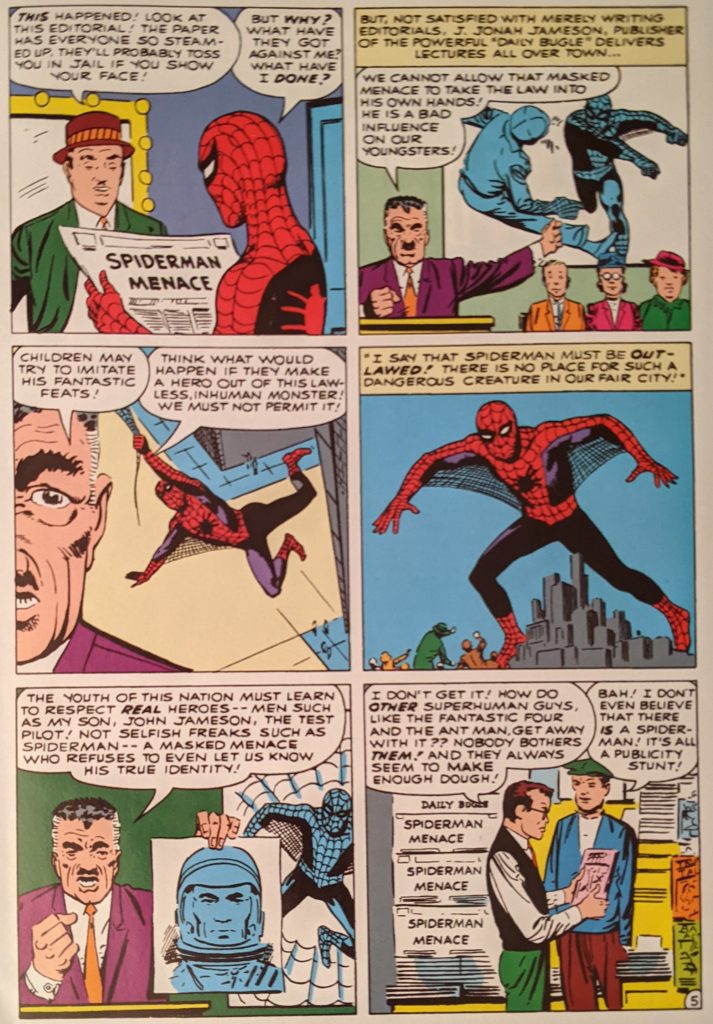
Getting a lot of fundamentals established quickly. With no way to make money as Spider-Man, we see Peter trying to find a part time job with no luck. While he’s on the street, he sees Aunt May walk by, and follows to see her pawning her jewelry. He feels responsible for their dire straits and furious at JJJ for taking his theoretical livelihood. While the AF16-18 stuff didn’t jibe too well with the first couple pages, it really does help explain why JJJ would be so angry already, when all Spider-Man’s done is a couple TV shows and apprehend one burglar.



Note that he doesn’t really swing on a web yet. The next page does show him lowering himself to the ground on one, but his signature swinging hasn’t developed. He rushes for the airfield, webbing a guard who tries to stop him and convincing a pilot to take him up to try to save John. They fly on an intercept course as Spider-Man climbs outside of the cockpit. As the capsule get closer, he hits it with a web, and goes flying off trailing behind it. He manages to pull himself up the webline, but he’s running out of time.
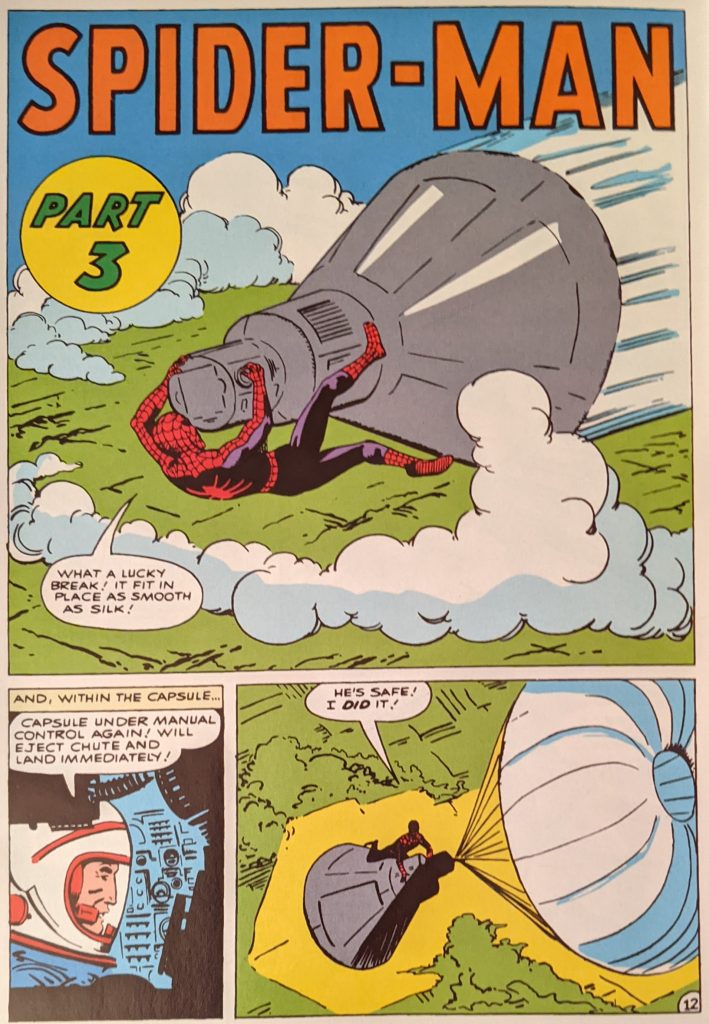
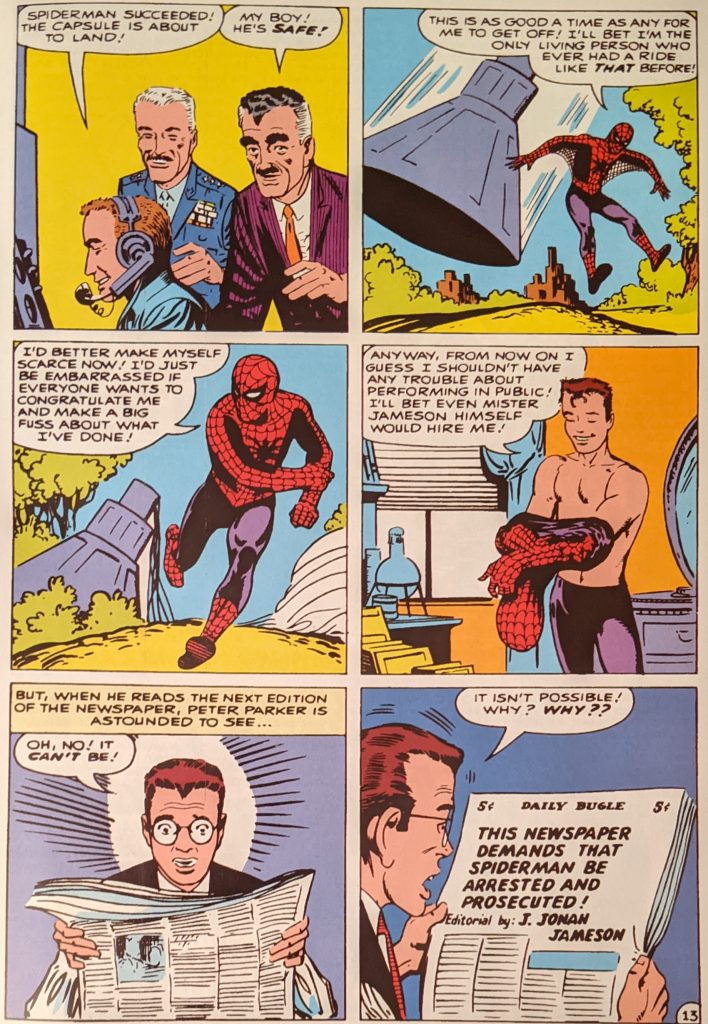
JJJ says the whole thing was a plot by Spider-Man in the first place, sabotaged so he could swoop in and get credit for saving the day. And as Peter sees on the street, people believe it, and hate him. JJJ’s crusade even gets Spidey put on the FBI’s wanted list, and we see the first sign that Aunt May thinks Spider-Man is scary as Peter worries what he’ll do next. A caption says, “What will Spider-Man do next? Only time will tell!” as if there isn’t a 2nd story on the very next page, further indicating these were Amazing Fantasy features held and combined into a Spider-Man book. Next up, a dramatic splash introduces The Chameleon and promises the FF for the 2nd story. We open on Peter Parker having hit on a money making scheme: He’ll join The Fantastic Four! He’s sure they’ll be eager to “have a teenager with superpowers working for them!” He tries to get in as a civilian, but that doesn’t work, so soon Spider-Man shoots a web over to their building and walks across it like a tightrope rather than swinging over. But he trips a proximity alarm immediately.

I love that Johnny used to just stand around on fire all the time.
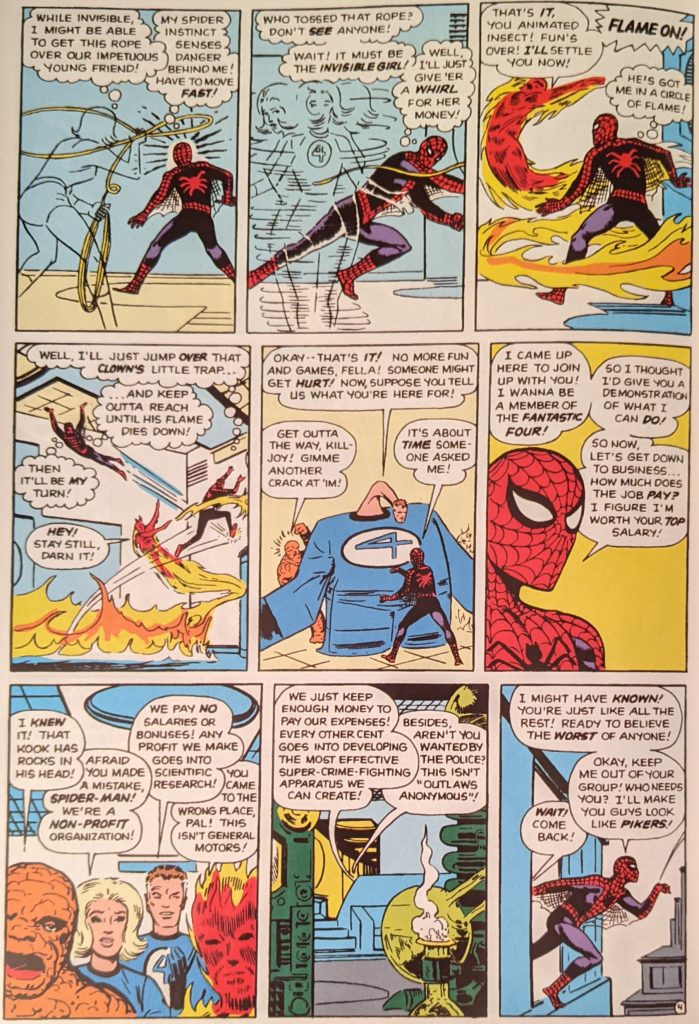
Big page here. The first, awkward use of the Spider Sense and the first encounter between Marvel’s oldest frienemies. Curiously, Lee would later have Jack Kirby remake this part of the story, expanded with more fighting, in a sequence inked by Steve Ditko and published in Fantastic Four Annual #1. But wait, here comes The Chameleon:
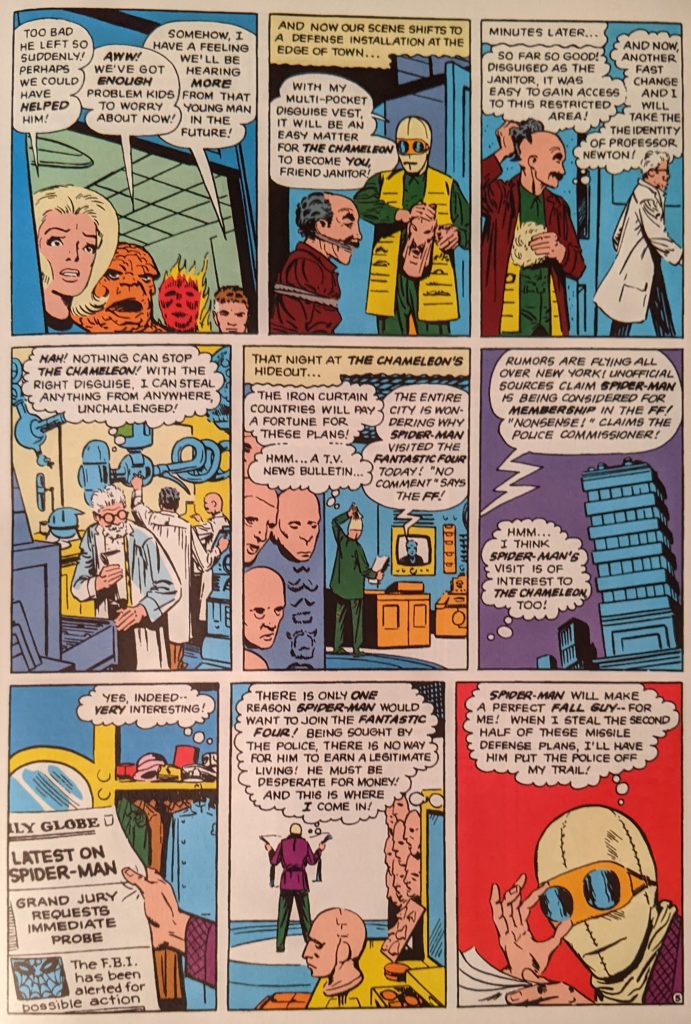
Quick and easy intro, we don’t have much time left. Ol’ Dimitri’s ability to become all these people is pretty ridiculous. How does he have the masks, wigs and clothes ready to go? Where’s he storing all this stuff? They up the ante on the silliness by having him say, “Spider-Man has the powers and instincts of a spider! So I will send him a message that only his Spider Senses will pick up!” He sends out a message over a radio frequency telling Spider-Man to meet him at 10 tonight, and it works! The Spider Sense is a rickety premise from jump, but this is too much for me. Peter PALMER, The Terribly Typoed Spider-Man, is visiting a spider exhibit at a museum when he gets the message. He dumps his regular clothes on the roof and heads out to investigate. Meanwhile, Chameleon has snuck into The Lark Building, which houses the plans he wants, by impersonating 2 guards in a row, and switches to Spider-Man to steal them. He uses a web gun on a 3rd guard, much like Kirby’s original Spiderman would have, grabs the plans and runs to a little helicopter he’s got stashed on the roof. He takes off just as Spider-Man passes him heading for the scene of the crime. Cops burst onto the roof just as he lands yelling about the secret plans he stole, and our man is very confused. He webs the cops and runs, realizing he’s been duped. Using his Spider Sense, he follows that helicopter…
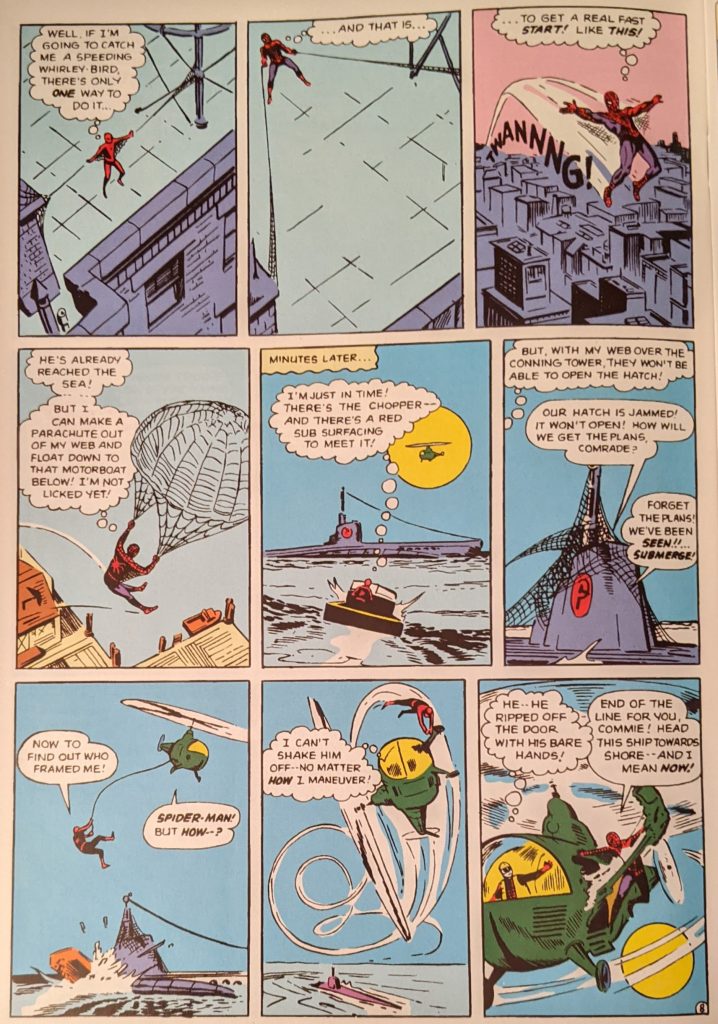
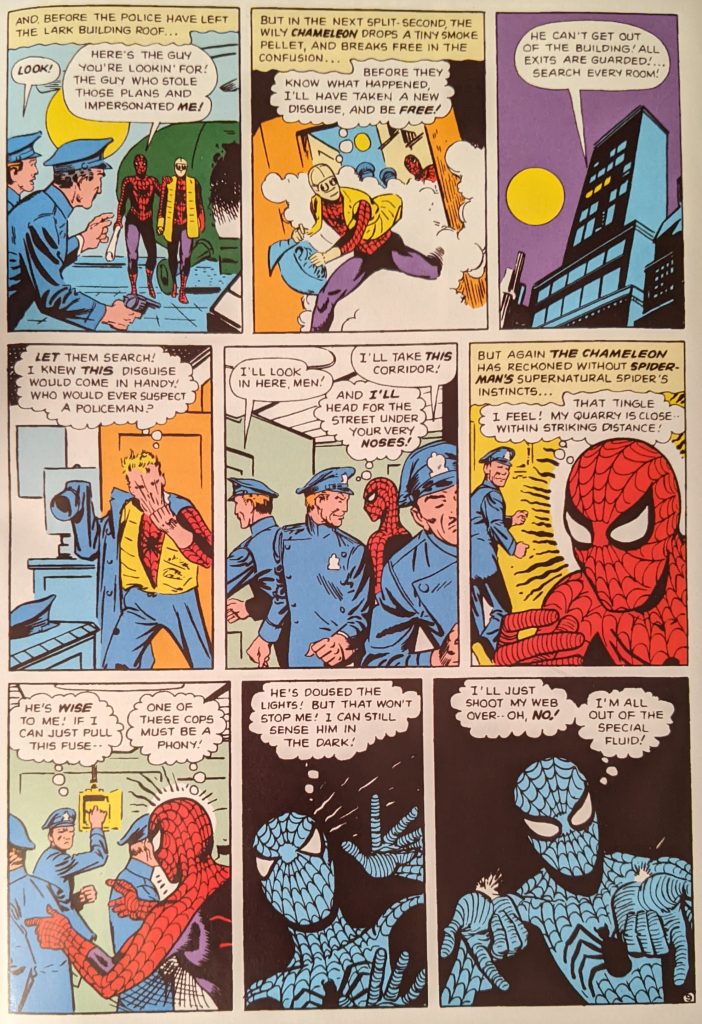
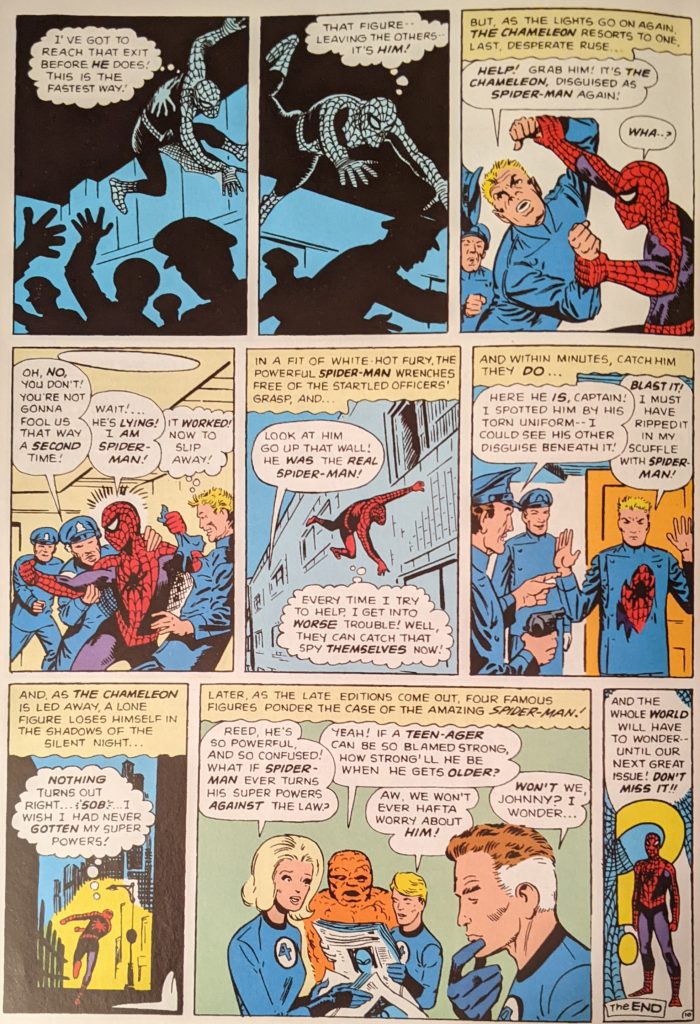
Poor Spidey. Not many heroes find themselves running away sobbing after an adventure. And those bbe tricks were a totally unique bit of action, too. A lot to make Spidey stand out for the comics reader of 1963. Like most superheroes… maybe all, the more I think about it… Spider-Man’s first foe is not his most enduring. We’ve seen that he’s been left to history for quite long periods of time since this issue. But right now, he’s the weirdest thing Spider-Man’s ever seen. But only until issue 2.

